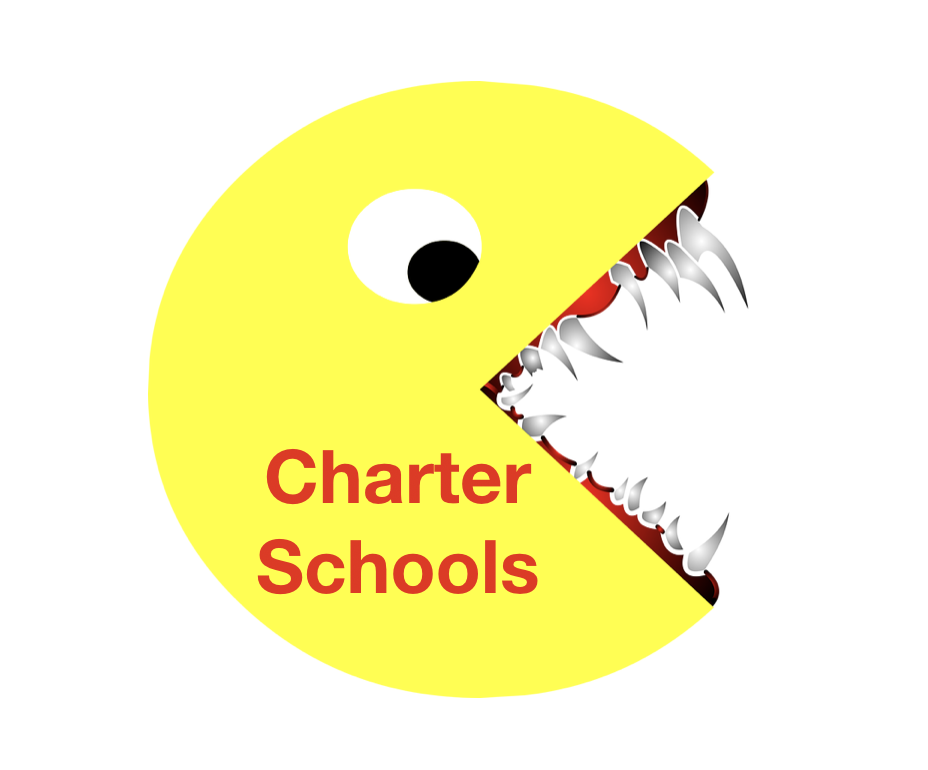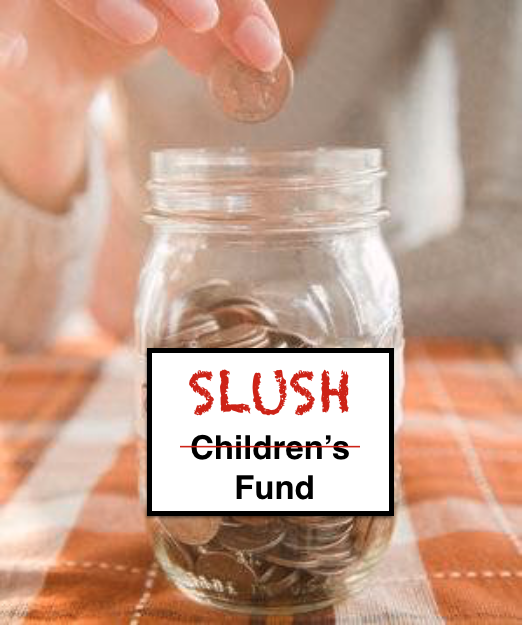
My friend Pam Harbin is trying to undergo a startling metamorphosis.
She wants to transform from an education activist into a Pittsburgh School Director.
Now that Board President Lynda Wrenn is stepping down after 4 years, city voters in District 4 will have to decide whether Harbin can make the change. The election is on May 21.
Residents in parts of Squirrel Hill, Point Breeze, Shadyside and North Oakland already know Harbin as a fierce warrior for children’s civil rights, the plight of disabled kids and authentic public schools.
I’ve known Pam, personally, for years in my own role as an education activist. Though I don’t live in the city, I’ve participated in numerous collective actions to fight for the schools all our children deserve. And right beside me in every case – often in front of me – was Pam.

I may not live in the district, but I wish I could vote for her. Harbin is an amazing leader with boundless energy, piercing intelligence, a deep knowledge of education policy, an advanced degree in finance and marketing, and an impressive track record of education justice achievements.
“I am deeply concerned for our system of public education,” she says. “The status quo isn’t working for all children. Thankfully, there are many people here in Pittsburgh and across the country who are fighting for investment in, and transformation of, our public schools. Unfortunately, their efforts are hindered by the well-funded organizations who fight for public school disinvestment, privatization, and for the elimination of teachers’ right to unionize.”
For the past 12 years, Harbin has been at the forefront of every major battle for the future of Pittsburgh’s public schools and the rights of its students.
Harbin was instrumental in pushing city school board directors to enact a suspension ban from Pk-2nd grade for minor non-violent conduct. She successfully fought to stop the district from implementing a physical restraint protocol that wasn’t trauma informed. She successfully fought against a policy that would have allowed school police officers to carry guns. She supported a successful Sanctuary Schools Policy for immigrant students. She also supported changes to the districts policies that would better welcome and include Pittsburgh’s LGBTQ students, including a change that allows students to use the bathroom that best fits their own gender identity.
Harbin and her coalition of local activists even made national news when they stopped the district from contracting with Teach for America, stopped the closing of 10 schools (after 23 were previously closed), pushed the board to hire a new Superintendent using an inclusive process that relied heavily on community input, and led the fight for a Community School Policy and the creation of 8 Community Schools.
Harbin has two challengers in the election: Anna Batista, a corporate consultant at Highstreet Consulting and Ashley Priore, a 19-year-old first year student at the University of Pittsburgh studying Business and English, who started a successful after school chess program for girls.
But despite facing a crowded field, Harbin has earned every organizational endorsement she has sought thus far, including the Allegheny County Democratic Committee, the Young Democrats of Allegheny County, the Stonewall Democrats and the Network for Public Education—an organization that frequently reposts my own writing as an education blogger and which is on the frontlines of education justice nationwide.

Harbin is one of the most experienced education leaders ever to run for school board in the city. She co-founded the Education Rights Network (ERN), a parent-led organization working for fully resourced, inclusive and quality education for students throughout Pennsylvania. The ERN is part of One Pennsylvania, an organization that unites low income and working class activists to tackle the fundamental economic justice and political problems of local communities.
“Our members are workers, students, parents, seniors, people with disabilities, and retirees who are excited to learn, collaborate, and build power,” she says. “We follow the money, confront the power, and make the change.”
ERN is a member of Great Public Schools Pittsburgh, a coalition of community, faith, and labor organizations working together to create sustainable public schools in Pittsburgh—an alliance which Harbin also helped to found in 2013. Great Public Schools is affiliated on the national level with the Journey for Justice Alliance, the Dignity in Schools Campaign, and the Alliance to Reclaim our Schools.
Harbin is also a member and past Co-Chair of the Pittsburgh Local Task Force on the Right to Education (LTF), a parent-majority organization that works with administrators of Pittsburgh Public Schools and community agencies to improve services for students with disabilities.
And she serves on the board of directors and was past President of Evolve Coaching (formerly Arts for Autism Foundation of Pittsburgh), supporting individuals with disabilities and their communities through education, employment, and the arts.
No one else in the race—and maybe in the whole city—has a resume like Harbin’s.
Harbin believes her years of leadership for and service to Pittsburgh students and families have provided her with the needed foundation for a transition from community leader to school board member. She has attended or streamed more than 2,000 hours of school board meetings. She has served on Pittsburgh Public Schools (PPS) district-wide advisory committees, including the Community Schools Steering Committee, Envisioning Educational Excellence Advisory Committee, Parental Involvement Policy Committee, Excellence for All Steering Committee, and the Special Education Delivery Model Advisory Committee. And through these many committees and organizations Harbin has helped more than 100 individual families secure an IEP or a 504 plan for their children—in part because she understands better than most the byzantine world of public school special education services.
No one is better suited to this position than Harbin. I literally wish we could clone her and have her fill every vacancy on the board. She is that qualified, that experienced, and that effective.
If this sounds a bit like a love letter, it kind of is.

I have many fond memories of fighting the power alongside Pam Harbin. I remember organizing events through Yinzercation with Pam, even canvasing local candidates door-to-door with her and my (then) 9-year-old daughter. No matter what, you could always count on Pam to be there for children.
“When our public schools are strong, our children and community thrive,” she says. “We have many great Pittsburgh Public Schools, teachers, and programs. But, in each school, there are children who can’t excel because their individual needs have not been met. We must do better.”
“We must remove the barriers that keep all of our children from fulfilling their dreams. This requires transformational, sustainable change in policy and practice at the local, state, and national level.”
If anyone can make that change happen, it’s Harbin. As someone who has a degree in finance, who is an experienced negotiator and a proven coalition builder, she is uniquely qualified to do so from within the board as she has been successful doing so from outside of it.
She has an ambitious set of goals and priorities if elected:
-Strengthening relationships between all stake-holders with an emphasis on child wellness.
-Defining success beyond standardized test scores to include authentic education practices, addressing trauma, disengagement, hunger, the quality of school food programs, the condition of our buildings and bathrooms, and children’s need for exercise and play.
-Achieving smaller class sizes and a smaller ratio of kids to adults in each building with more teachers, counselors, social workers, paraprofessionals, nurses, librarians, and other staff that keeps the building functioning at its best.
-Restoring funding to art, music, physical education, and other programming that keep kids wanting to come to school.
-Stopping criminalization and over-policing of students, and stopping the use of ineffective punishments that keep children away from their learning and put them on the track to drop out, to jail, and to poverty.
-Intentionally recruiting, retaining, and supporting educators of color and those who identify as LGBTQ.
-Working to make teacher mentoring, new teacher induction, and professional development better to make the very best use of teachers’ time and address key gaps in preparation to teach the wide spectrum of students in the district.
-Making teacher evaluation fair and consistent, not based solely on test scores or value added models.
-Ensuring teachers (and all school staff) are well paid, treated fairly, and valued for the critical work they do for children every day.
-Protecting collective bargaining rights so teachers (and all staff) have a voice to improve their schools – because teaching conditions are students’ learning conditions.
-Investing in the proven Community Schools model and work collaboratively with community partners to bring resources to each school.
-Working at the state level to force our legislators to finally provide adequate, equitable, and sustainable funding for public education and stop efforts to dismantle public education through vouchers and other privatization schemes.
-Building coalitions to improve the flawed state Charter School Law – Charter Schools must have more accountability for the delivery of education to all students, including disabled children, English Language Learners, and kids who are homeless or who are in foster care.

I could literally go on about Pam for another 10,000 words. Easy.
But let me close with this.
Harbin began her journey as an education leader when she started advocating for her own children at their first elementary school—Liberty elementary in the Shadyside neighborhood of Pittsburgh. She found that she could make a difference for a few children at a time by throwing herself into volunteer work at the school.
But then she realized that if she wanted to make a difference for more than just a few children that she needed to work with others. Indeed, to do this work effectively Pam has had to work with people of different backgrounds, races, opinions and ideologies. She has had to listen to others, to compromise, to build bridges, and to prioritize common goals in each of her coalitions. In short, she gets things done.
And she’s been doing that for more than a dozen years.
Not because she has no choice. Not because anyone is paying her to do so. Not because doing so is bringing her any riches or fame.
But because it has been the right thing to do.
And that’s the best endorsement I can imagine.
NOTE: Special thanks to Professor Kathleen M. Newman who helped edit this article.
Click HERE to join Pam’s campaign!
Like this post? I’ve written a book, “Gadfly on the Wall: A Public School Teacher Speaks Out on Racism and Reform,” now available from Garn Press. Ten percent of the proceeds go to the Badass Teachers Association. Check it out!


























